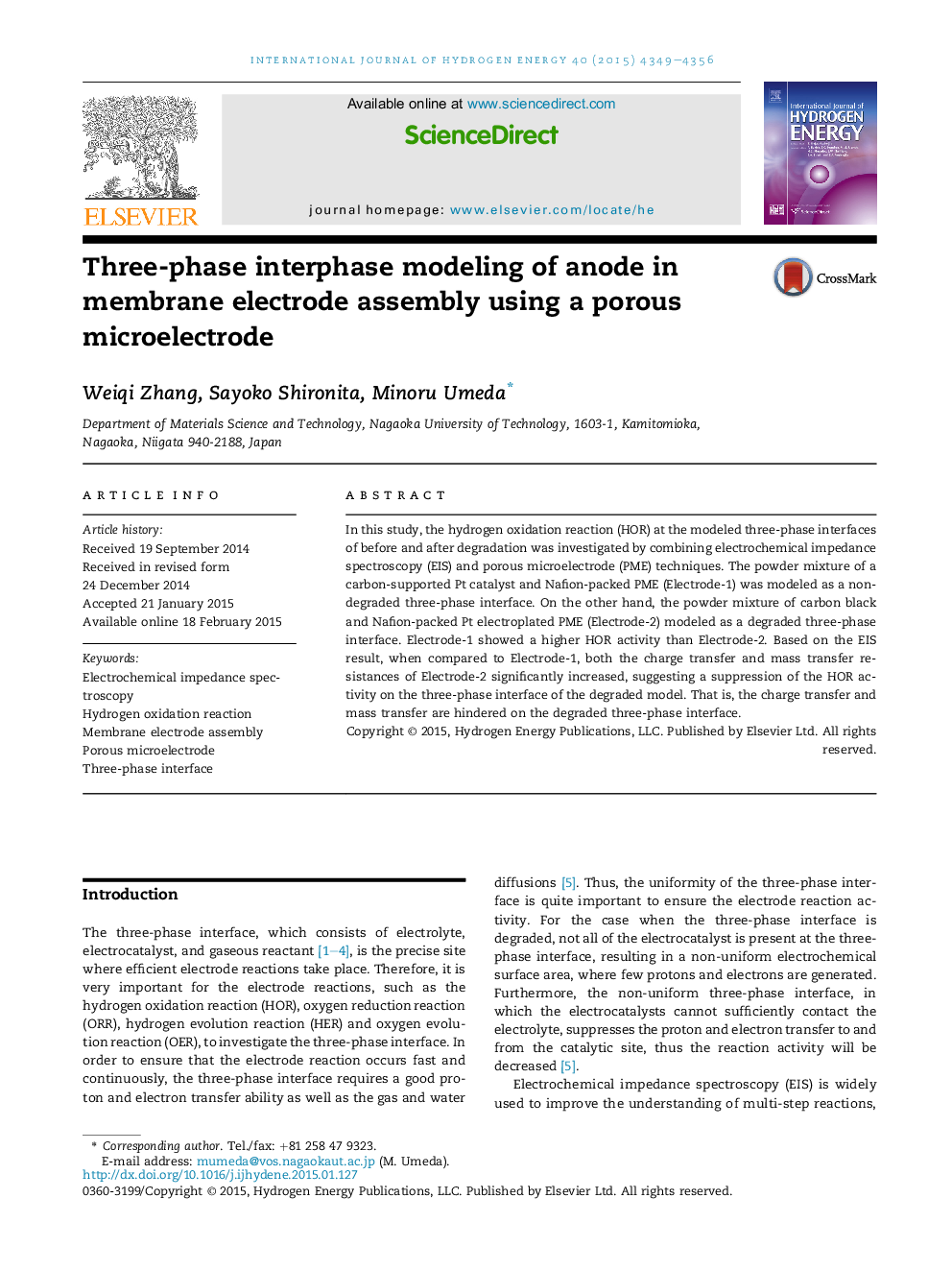| Article ID | Journal | Published Year | Pages | File Type |
|---|---|---|---|---|
| 1271760 | International Journal of Hydrogen Energy | 2015 | 8 Pages |
•Non-degraded and degraded three-phase interfaces were modeled.•Porous microelectrodes were employed as the models.•The impedance behavior of hydrogen oxidation reaction was investigated.•Charge transfer resistance was significantly higher on the degraded model.•Mass transfer resistance was significantly higher on the degraded model.
In this study, the hydrogen oxidation reaction (HOR) at the modeled three-phase interfaces of before and after degradation was investigated by combining electrochemical impedance spectroscopy (EIS) and porous microelectrode (PME) techniques. The powder mixture of a carbon-supported Pt catalyst and Nafion-packed PME (Electrode-1) was modeled as a non-degraded three-phase interface. On the other hand, the powder mixture of carbon black and Nafion-packed Pt electroplated PME (Electrode-2) modeled as a degraded three-phase interface. Electrode-1 showed a higher HOR activity than Electrode-2. Based on the EIS result, when compared to Electrode-1, both the charge transfer and mass transfer resistances of Electrode-2 significantly increased, suggesting a suppression of the HOR activity on the three-phase interface of the degraded model. That is, the charge transfer and mass transfer are hindered on the degraded three-phase interface.
